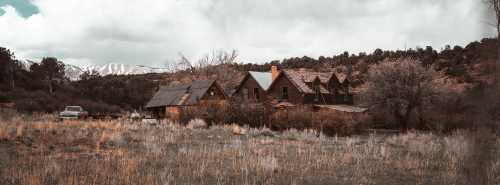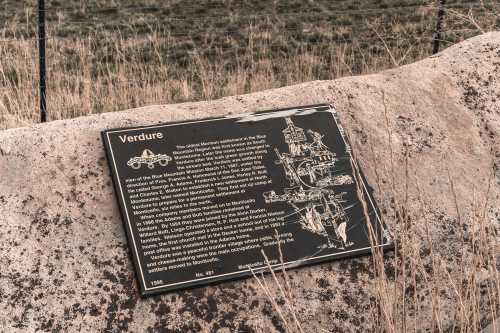Utah’s ghost towns can possess an eerie, chilling atmosphere. They are a draw for ghost hunters and those who are fascinated with the paranormal. However, these destinations offer so much more. They provide a look into Utah’s past. They tell stories and can give a small glimpse into life decades ago. Verdure, Utah was once a humble, charming pioneer town in San Juan County, several miles south of Monticello. Today, it sits abandoned, with only a handful of structures remaining.
If you love creepy content, Only In Your State’s Vacant series – which partners with talented photographer Johnny Joo – explores a dozen other fascinating abandoned places just waiting to be discovered.
Editor’s Note: Due to the nature of abandoned destinations, many of the places featured in this series are off-limits to visitors or have actually been demolished. We do not condone trespassing and other illegal activity but rather encourage readers to enjoy learning about these fascinating destinations.
Similar to many other communities across Utah, Verdure began as a pioneer town and is the oldest Mormon settlement in the Blue Mountain Region. It was settled by individuals in 1887 under the guidance of President Francis A. Hammond of the San Juan Stake in the Church of Jesus Christ of Latter-day Saints. It was first known as South Montezuma, but as the settlers spent more time in the area and saw the greenery that it possessed, the name was changed to Verdure, meaning a condition of freshness or the fresh green color of vegetation.
Originally the settlement was used as a base while preparations were made to establish a more permanent community in North Montezuma (now known as Monticello). But, two families — the Adams and Butt families — loved the area and planned to remain. Eventually, more families were drawn to Verdure, and in the early 1890s, a store, school, church, and even a post office were established.
The community was centered around agriculture with many settlers possessing farming roots that went back many generations. If you visited Verdure decades ago, you’d see cattle grazing, fields of growing crops, and farmers busily moving from one task to the next. The main occupations in Verdure included cattle, farming, and cheese making.
Agriculture was so successful in this area that in 1903, the Utah State Agricultural College in Logan established an experimental station to learn more about dry farming techniques and crops that could survive in unique climates like Verdure. This exploration station remained in the area for more than 13 years.
Unfortunately, residents began to move away from Verdure as growth occurred and opportunities developed in nearby Monticello. The community of Verdure slowly started to dwindle and homes and businesses that were once filled with smiles began to sit empty.
Decades later, remnants of Verdure still sit abandoned, reminding us of times gone by. In 1995, a historical marker was erected, helping visitors to reflect on the people who once called this area home.
Verdure is a piece of Utah's history that not many people know about. It’s a destination where we wish that walls could talk. Think of all the stories these incredible vacant buildings would tell.
Did you know there are more than 100 ghost towns in Utah? If you love creepy and abandoned places, one of the best ways to see these unique destinations is on a road trip. Check out this road trip itinerary that takes you to six ghost towns in Utah. Just make sure you are fully prepared for the drive — including the snacks!
Special thanks to Cleveland-based photographer Johnny Joo of Odd World Studio for the photos used in this article. To discover more creepy and abandoned places, check out his website, Architectural Afterlife.
Get the latest updates and news
Thank you for subscribing!






















